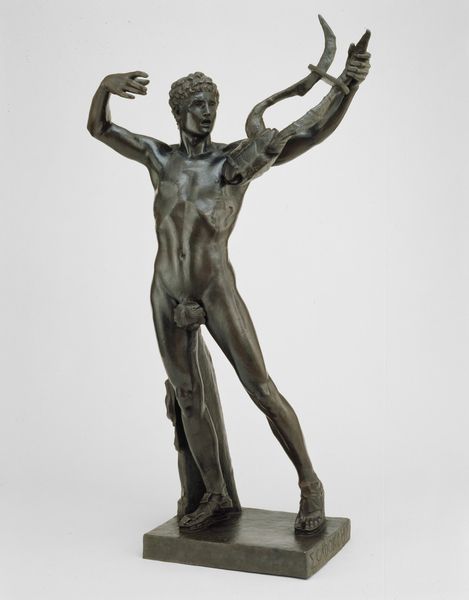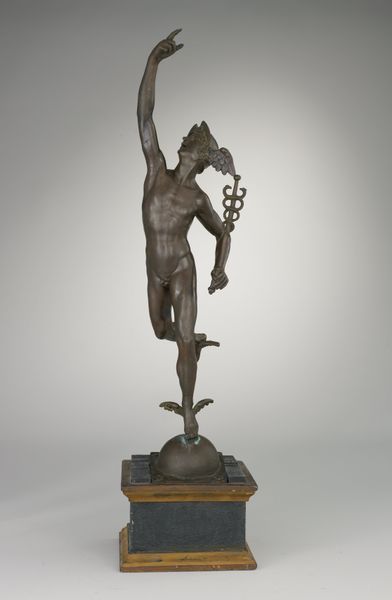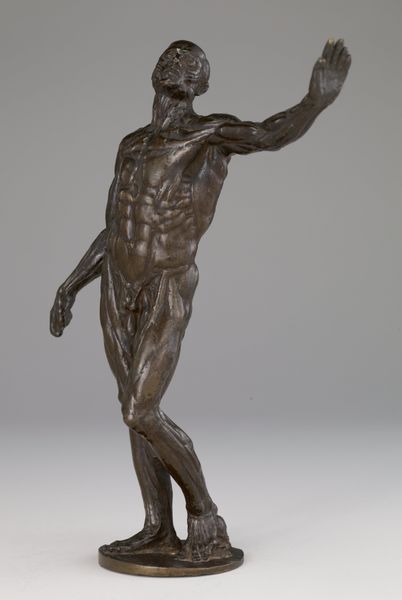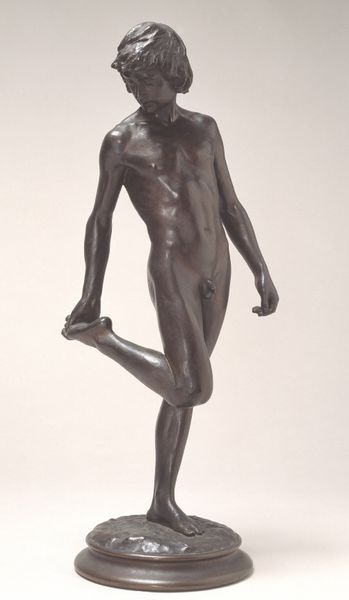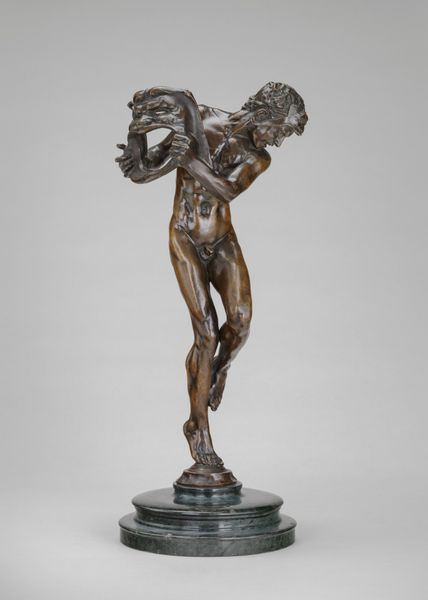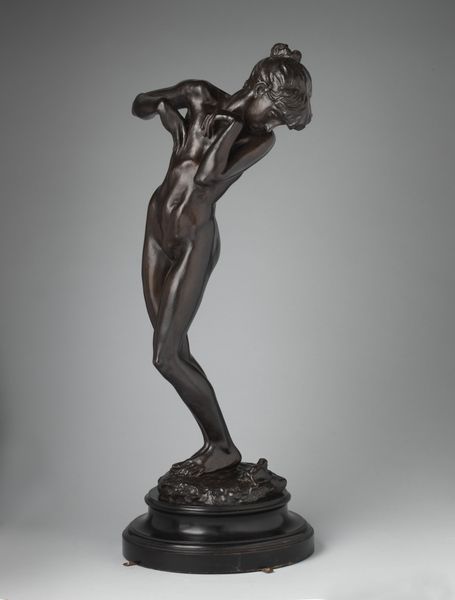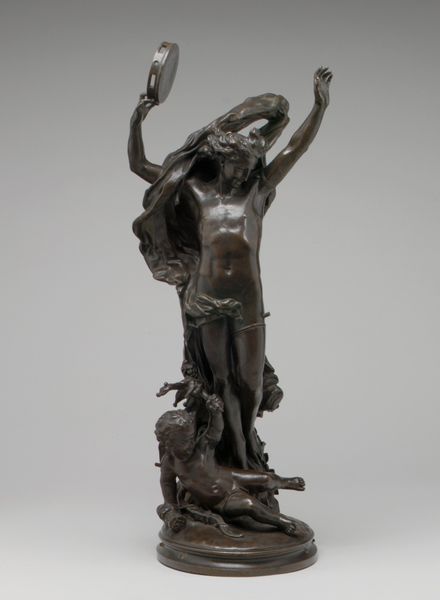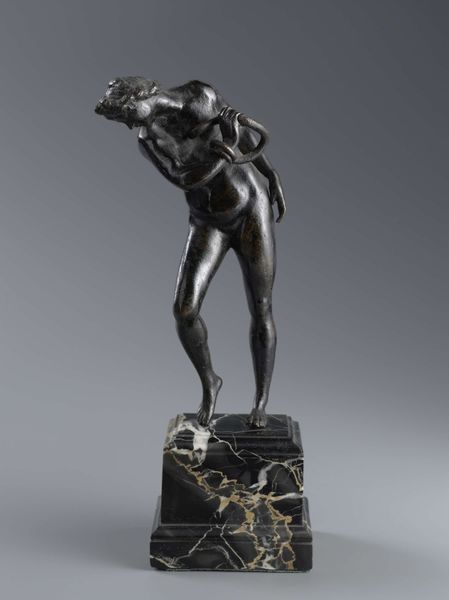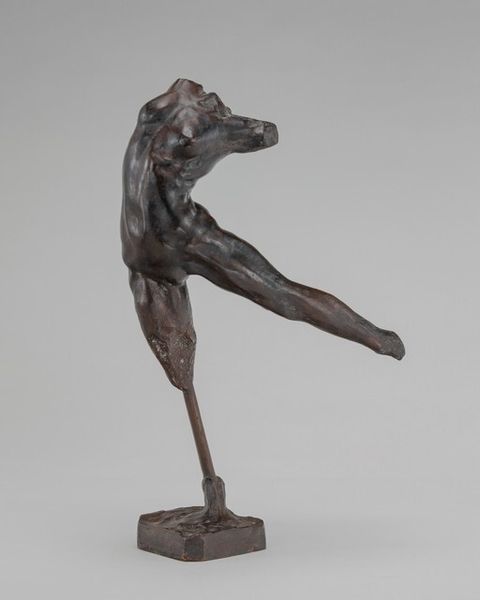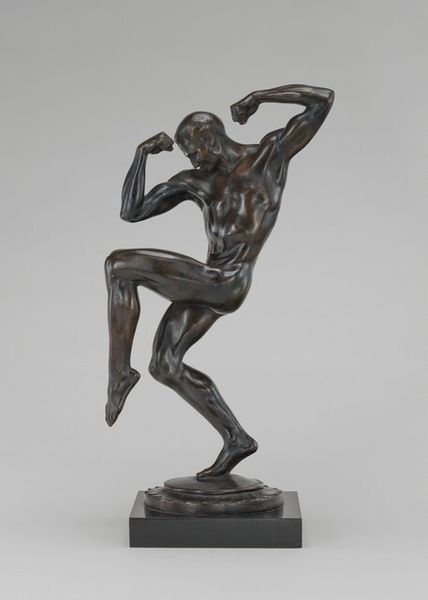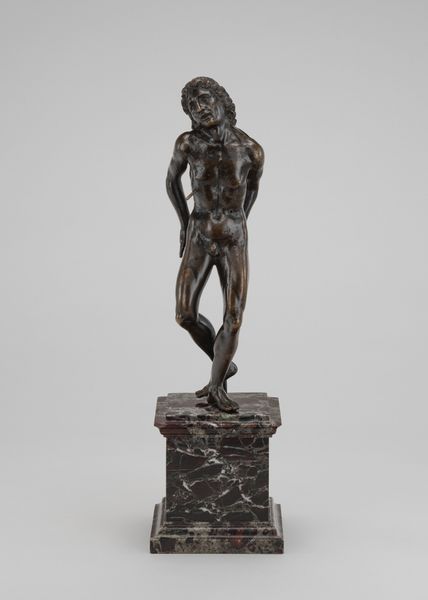
sculpture, wood
#
portrait
#
baroque
#
sculptural image
#
figuration
#
sculpture
#
wood
Copyright: Rijks Museum: Open Domain
Curator: Initially, I am struck by the figure's verticality; it draws the eye heavenward. Editor: Indeed. We are looking at a carved wooden crucifix dating roughly from 1640 to 1660, crafted by Jan van (III) Doorne. It’s an exquisite example of Baroque figuration, powerful yet surprisingly intimate. Curator: Intimate is the word! There is no cross here, which is an unusual break with tradition. And note the arms reaching almost in supplication or offering rather than crucifixion. What do you make of it? Editor: The missing cross alters everything. Instead of an image of suffering and death, it's almost ascendant. The body, while clearly marked by hardship, appears remarkably strong. Perhaps it speaks to the politics of the era. The rise of more personal devotional practices. Curator: Perhaps, or perhaps there’s a more internal symbolism at play. Baroque art often seeks to capture heightened emotional states. With arms raised, this figure almost channels the act of reaching or aspiring, which has been used in spiritual practices and iconography through millennia and across cultures. Editor: A symbol of hope, rather than just remembrance of suffering? But it can’t be entirely divorced from its context. Sculpture like this often appeared in private chapels and domestic settings. It would remind the owners of their vows. This particular work uses this familiarity to explore how the church sees salvation, maybe? Curator: A fascinating interpretation! The bare wood lends an earthiness. The drapery isn't overly fussy, unlike other baroque sculptures, as the piece focuses on form and perhaps on the essential message rather than excess ornamentations of that period. I agree; such symbolism may invite multiple layers of devotional reflection. Editor: Well, its lasting power certainly speaks to the effectiveness of the piece’s subtle drama and, indeed, invitation for more personal forms of belief that have stood the test of time in ways others didn’t! It challenges viewers to see beyond established iconography, offering solace in aspiration rather than despair. Curator: Indeed, the way the familiar becomes fresh, and perhaps becomes personal! Editor: Exactly.
Comments
No comments
Be the first to comment and join the conversation on the ultimate creative platform.


